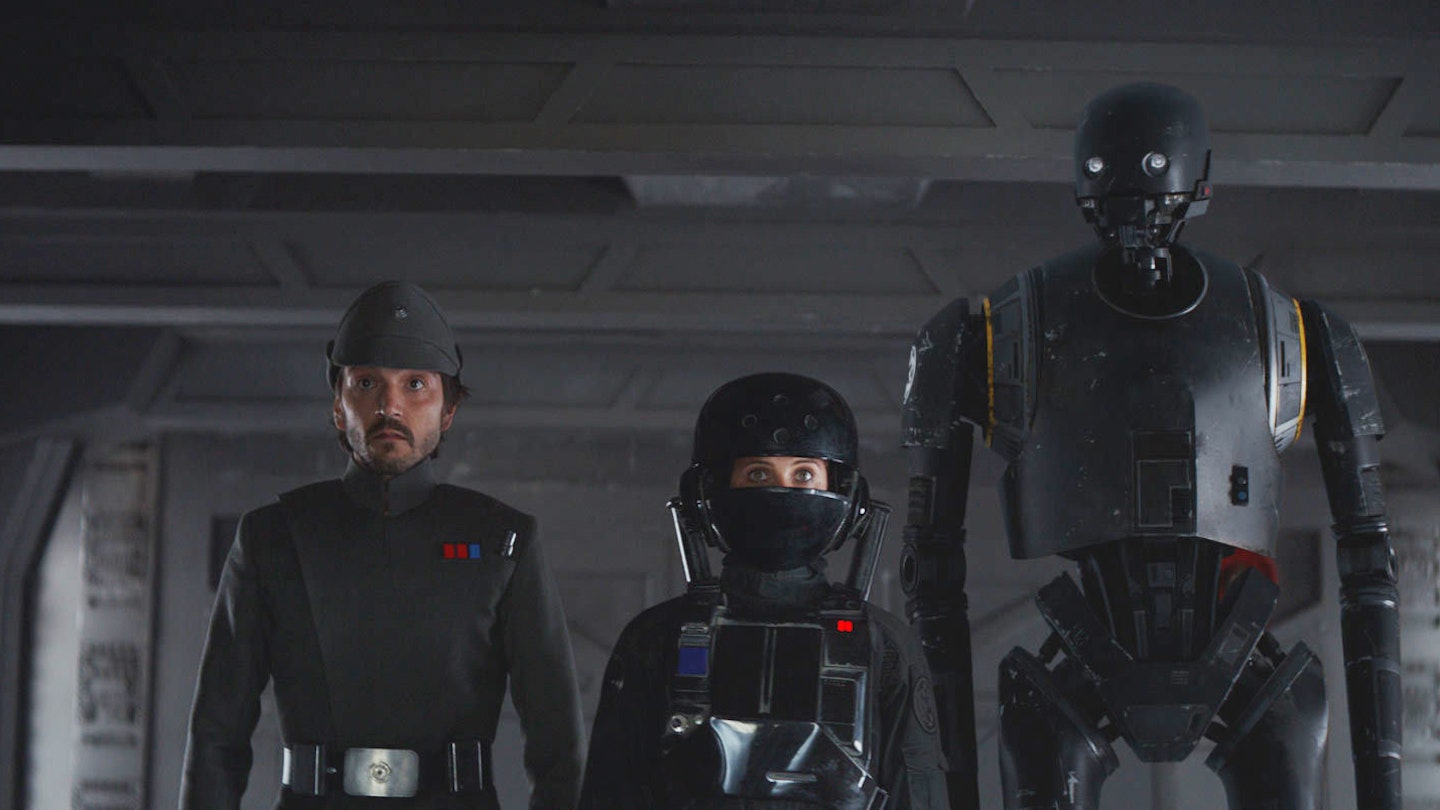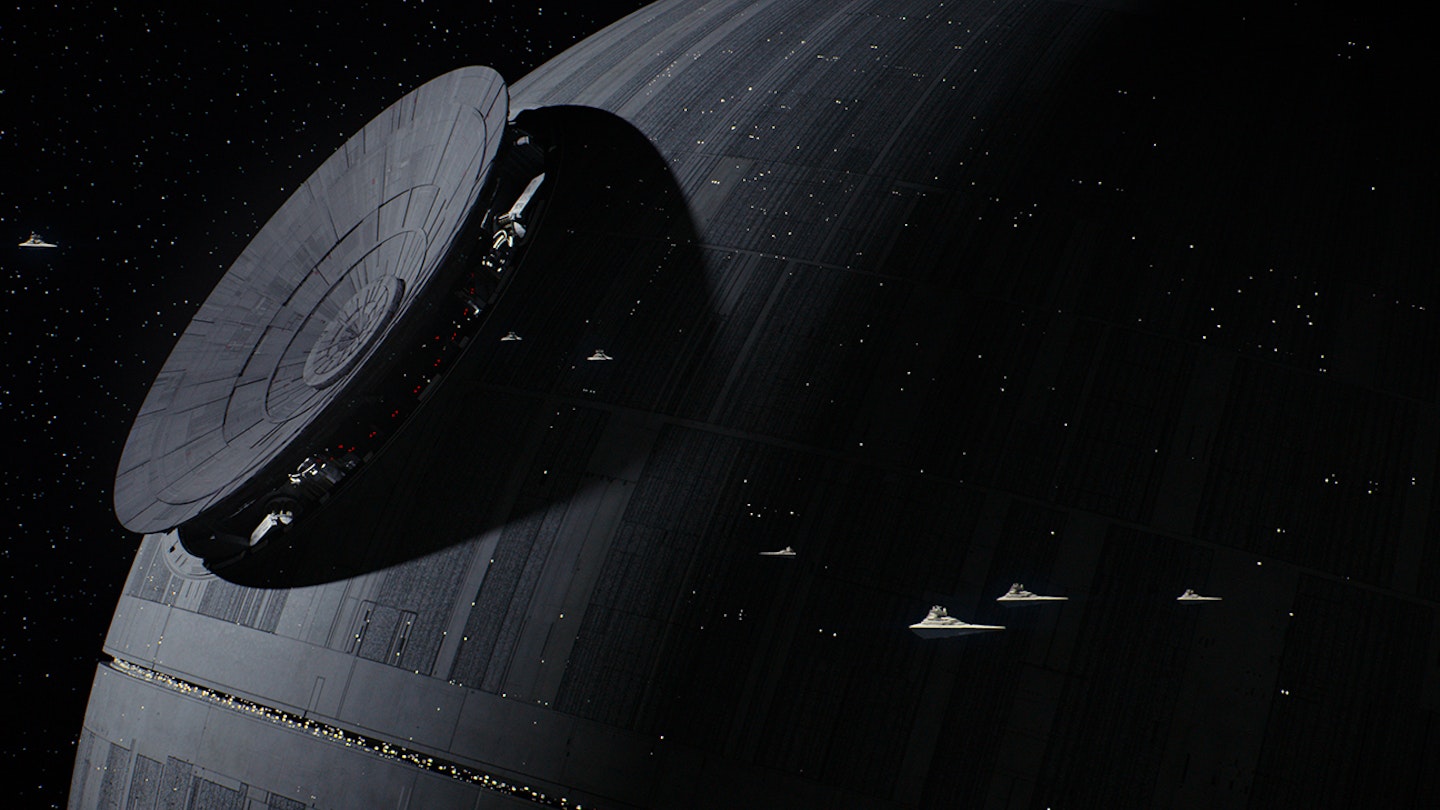Ultimate Weapon

Knoll: One of the things I think is wonderful and charming about the vérité style that Gareth’s got is that shots aren't specifically composed to feature particular effects. That’s something I'm always encouraging directors to do: just shoot this like it was any other live-action. How would you shoot this if this were all real? Just do it that way. There should be no stylistic distinction between non-effects shots and shots that have effects in them. So Gareth has fully embraced that.
Kennedy: I go back to what Dennis Muren always used to say to me which is, “Push it in camera until you can't figure out any way to do it.” A perfect example is the 63 shots in the original Jurassic Park. One of the first times we realised we had to push it was when Steven [Spielberg] wanted the Raptor to jump onto the counter in the kitchen. We realised we couldn't get the puppets to do exactly what we wanted. So that pushed us into identifying the CG shots. I think sometimes nowadays filmmakers don't push themselves as much as they should to do that kind of thing. It's more about “What If” thinking, rather than only doing what you can.
I think there is a gravitas to this story. I think there is a seriousness to it.
Knoll: Gareth took it even to the point of making some of the shots harder to execute. His style is to go into the scenes and kind of find the blocking as he's shooting. He'll let the actors find the blocking that feels the most natural to them. Then he'll go in with the camera — he operates the camera himself most of the time — and start finding what angles look right. But as a consequence [laughs] I sometimes don't know what the camera's seeing until we're actually shooting it. So that can make it a little bit harder to try to make sure you have blue screens in the right places and tracking marks when you need them. Sometimes it’s, “well, okay we shot it, and there weren't any tracking marks. All right, well... We'll figure it out I guess.” So it's been a little harder in post. But you do get that spontaneity in the camera that I think sort of outweighs those concerns. I think in the end the results are better.
Kennedy: If there is any frustration for Gareth, it's the inability to find everything in the process of making his films the way he started out. Crafting it through the lens is very much a product of his style and very, very hard to do inside these big, giant movies, where you have to plan everything and you've got a huge army of people that need to know exactly what they are prepping, what they are doing and what is coming up — as opposed to a smaller film environment where you have the luxury of finding it as you go along. And finding that balance was tough for Gareth. But I think that comes through in his filmmaking. It certainly comes through in this.
Edwards: It goes against what you'd expect: that, having lots of money, sometimes it's harder to be spontaneous and do whatever you want than when you have no money. Everyone was aware of that, and we were desperate for it not to be the case. It's whatever's best for the film, you know? At the end of the day, people don't watch a spreadsheet, they watch a movie.
Restore Freedom To The Galaxy...

Knoll: I think it's good that Rogue One is the first of these Star Wars Stories. Episode VII had a lot of very familiar elements and I think some of the choices that were made there were oriented towards reassuring people that, yes we can get the fun of the original Star Wars movies back. But I think now that statement's been made and we've had that success, we can be a little brave now with going to places that we've never seen before and doing tonal experiments.
Kennedy: I wouldn’t say Rogue One plays older than the Skywalker saga, but I think there is a gravitas to this story. I think there is a seriousness to it. Which is not to say there isn’t humour — there is definitely a lightness. But this is a mission movie and it’s in the genre of a World War II picture.
Edwards: You know people say, “what would Jesus do?” it was sometimes like, “What would George do? What would George have done?” But he was very excited about us doing something different and not just repeating what he had done. It felt like a license for us to go and be different. Like, if all you're doing is riffing off the existing stuff, then it's not in the spirit of Star Wars.
Kennedy: We are really fortunate to be able to do this, because George has given us this rich mythology. That’s what we are trying to do: find stories that really allow us to explore the galaxy in a way that is new and different.
Rogue One: A Star Wars Story is in cinemas now.
